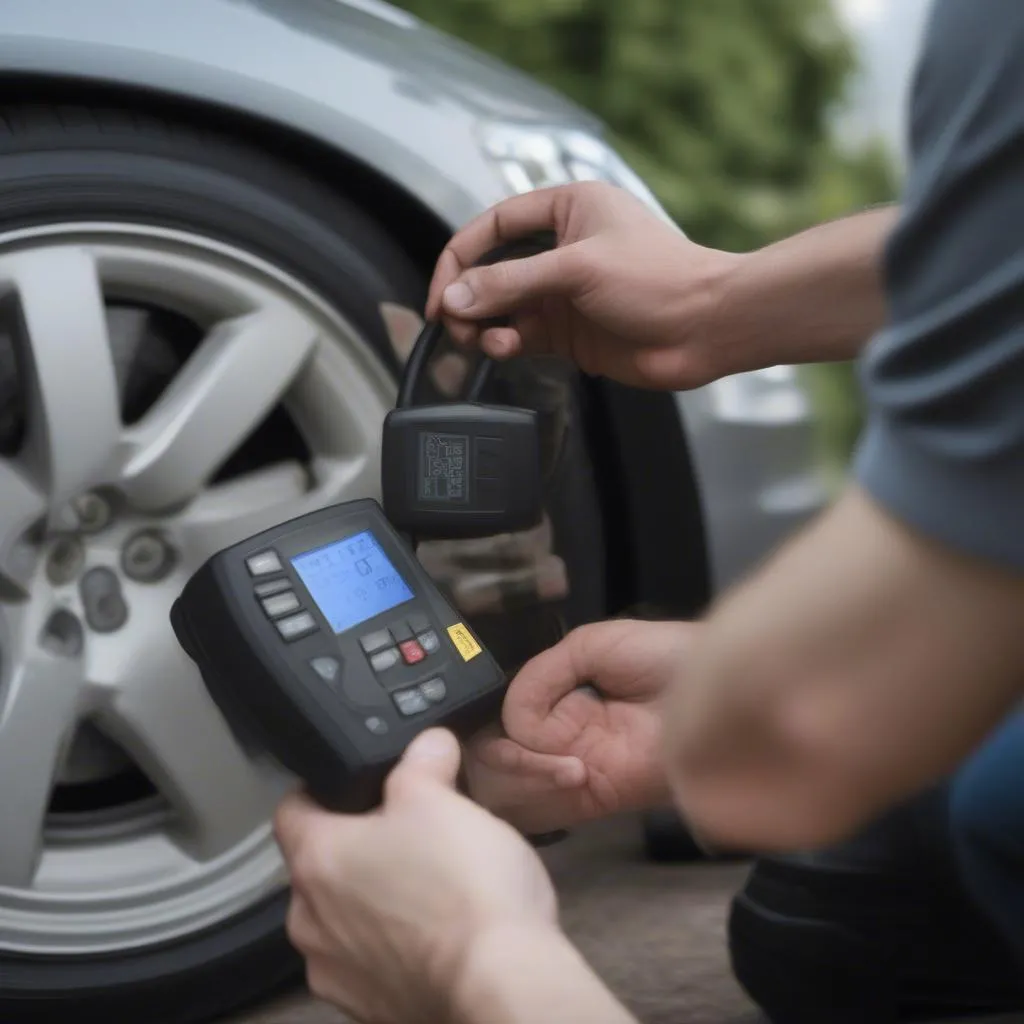Imagine this: you’re driving down a highway, enjoying the open road, when suddenly the TPMS light on your dashboard illuminates, sending a wave of unease through you. You’re not sure what’s wrong, but you know it’s related to your tires. Now, you might be wondering, “Can my OBD2 scan tool help me figure out what’s going on with my TPMS?”
This is a common question, and the answer is a bit complex. While OBD2 scan tools are generally great for diagnosing engine problems, they don’t always have the capabilities to read and interpret TPMS data. In this article, we’ll explore the intricacies of TPMS systems, the limitations of OBD2 scanners, and the most effective ways to check and troubleshoot your TPMS.
Understanding TPMS: More Than Just a Warning Light
What is TPMS?
TPMS, or Tire Pressure Monitoring System, is a safety feature that monitors the air pressure in your vehicle’s tires. It’s designed to alert you to any potential issues, such as low tire pressure or a leak.
How TPMS Works
Most modern vehicles come equipped with direct TPMS systems. These systems use sensors mounted inside each tire valve stem. These sensors send real-time pressure readings to the vehicle’s ECU (Engine Control Unit), which then relays the data to the TPMS warning light on your dashboard.
The Limitations of OBD2 Scan Tools with TPMS
Not All Scanners Are Created Equal
While OBD2 scan tools are generally designed to communicate with the vehicle’s ECU and retrieve data on various engine-related systems, their capabilities regarding TPMS vary. Some basic OBD2 scanners might not be able to access TPMS data at all.
TPMS Data Requires Specific Hardware
To access TPMS data, you’ll often need a specialized scan tool designed specifically for TPMS diagnostics. These tools are equipped with specific hardware and software that can communicate with the TPMS sensors and interpret their readings.
What to Do When Your TPMS Light Turns On
Step 1: Check Your Tire Pressure
The first step is to check the air pressure in all of your tires. Use a tire pressure gauge to verify that the pressure is within the recommended range specified in your owner’s manual.
Step 2: Use a TPMS Scan Tool
If your tire pressure is fine, you might have a faulty TPMS sensor. A dedicated TPMS scan tool can help you diagnose any sensor problems. These tools can typically:
- Read TPMS sensor data and identify any faulty sensors.
- Reprogram new TPMS sensors to match your vehicle’s system.
- Perform sensor activation and calibration.
Step 3: Consult a Mechanic
If your TPMS light continues to illuminate, or if you suspect a problem with your TPMS system, it’s always best to consult a qualified mechanic. They can diagnose the issue accurately and perform any necessary repairs.
Frequently Asked Questions
Can I use my OBD2 scan tool to check my TPMS?
As mentioned earlier, basic OBD2 scan tools may not be equipped to read and interpret TPMS data. For a reliable TPMS diagnosis, a dedicated TPMS scan tool is recommended.
How do I find the right TPMS scan tool for my car?
When choosing a TPMS scan tool, consider factors such as compatibility with your vehicle’s make and model, features offered, and price. You can find TPMS scan tools at auto parts stores, online retailers, or through your local mechanic.
How often should I check my tire pressure?
It’s generally recommended to check your tire pressure at least once a month, and before a long trip.
What are the benefits of using a TPMS scan tool?
Using a TPMS scan tool can help you:
- Identify faulty TPMS sensors.
- Reprogram new TPMS sensors.
- Monitor tire pressure in real-time.
- Save money on potential tire damage caused by low pressure.
Where can I find a dedicated TPMS scan tool?
You can find TPMS scan tools at various places, including:
- Online retailers: Amazon, eBay, etc.
- Auto parts stores: AutoZone, Advance Auto Parts, etc.
- Specialty automotive retailers: Your local mechanic may also be able to recommend a tool or provide services.
Conclusion
While OBD2 scan tools are great for engine diagnostics, they may not always provide the necessary information for TPMS troubleshooting. A dedicated TPMS scan tool is essential for a thorough diagnosis of your TPMS system. Remember, maintaining proper tire pressure is crucial for safe driving and optimal fuel efficiency. If you have any concerns or questions, don’t hesitate to consult a qualified mechanic or reach out to our team of automotive experts.
 TPMS Scan Tool
TPMS Scan Tool
 TPMS Sensor
TPMS Sensor
 OBD2 Scanner
OBD2 Scanner
Need help with your TPMS system or other automotive diagnostics? Contact our expert team at WhatsApp: +84767531508 for 24/7 support!


